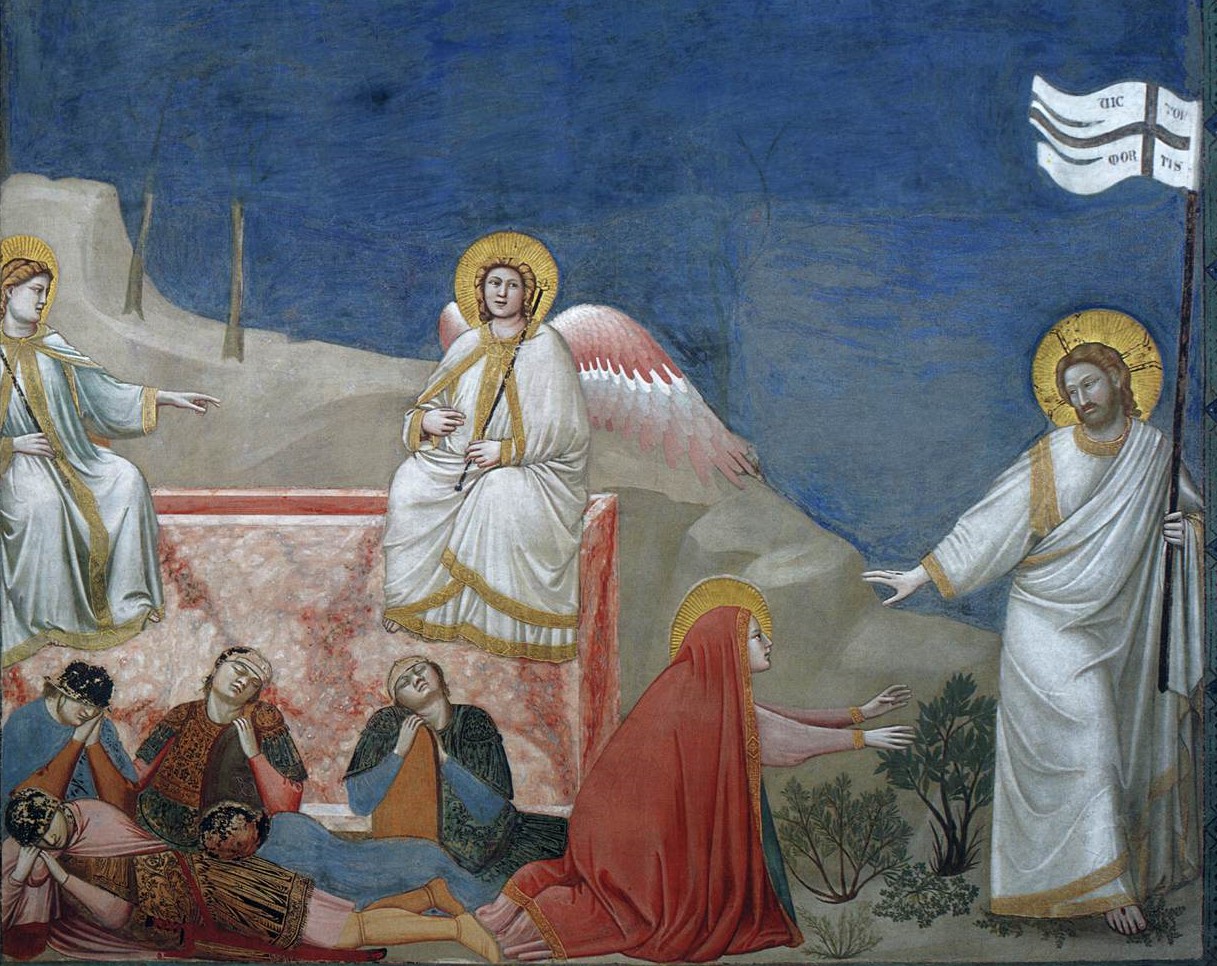
As Christ ascends, we are called to ascend in at least two ways:
The event with Mary Magdalene takes place early in the morning on the day of His resurrection. Mary recognizes the Lord and runs to embrace Him:
Jesus said to her, “Mary.” She turned and said to Him in Aramaic, “Rabboni!” (which means Teacher). “Do not cling to Me,” Jesus said, “for I have not yet ascended to the Father. But go and tell My brothers, ‘I am ascending to My Father and your Father, to My God and your God.’” Mary Magdalene went and announced to the disciples, “I have seen the Lord!” And she told them what He had said to her (Jn 20:16-18).
Mary’s first reaction is to call Jesus by His earthly title, Rabboni. He is that, but much more. At one point, Jesus bids her to look at Him again. She is clinging to Him, not just to His Body but to her earthly notions of Him as well. To her, He is Jesus, teacher, the hoped-for Messiah. Jesus has her step back and take another look:
Go instead to my brothers and tell them, ‘I am ascending to my Father and your Father, to My God and your God.’
Mary steps back and does see something more. When she returns to the brethren she says, “I have seen the Lord!”
This is the full proclamation of the resurrection. Yes, a corpse has come back to life, but it is more than that. Jesus’ humanity is gloriously transformed and He is now seen as “the Lord.” He has always been, but except at His transfiguration, this has not been seen by any of the disciples.
This is our first understanding of ascension as it applies to us. The Lord is ascending in the sight of the apostles in the sense that they are seeing more of who He really is. He is exalted in their sight. He is ascending in their minds, hearts, and understanding.
Pope St. Leo the Great said,
They made such progress through his ascension that … they were able to fix their minds on Christ’s divinity … What was presented to their bodily eyes no longer hindered them from turning all their attention to the realization that he had not left his Father when he came down to earth, nor had he abandoned his disciples as he ascended into heaven.
The truth is that the Son of Man was revealed as Son of God in a more perfect and transcendent way once he had entered into his Father’s glory; he now began to be indescribably more present in his divinity to those from whom he was further removed in his humanity.
A more mature faith enabled their minds to stretch upward to the Son in his equality with the Father; it no longer needed contact with Christ’s tangible body, in which as man he is inferior to the Father. For while his glorified body retained the same nature, the faith of those who believed in him was now summoned to heights where, as the Father’s equal, the only-begotten Son is reached not by physical handling but by spiritual discernment (from a sermon by Saint Leo the Great, pope (Sermo 2 de Ascensione 1-4: PL 54,397-399)).
Thus, the Lord ascends in their minds and hearts as He ascends to glory. Even prior to his ascension forty days after the resurrection, He was ascending in their estimation and understanding.
So, too, for us, who must come to understand the Lord more deeply as we go. He is a teacher, savior, brother, and friend to be sure, but above all His is the Lord. In our understanding, He is ascending and must ascend so that we see Him more clearly as Lord and God.
There is another sense in which the Lord ascends for us and we must ascend with Him. As He passes beyond our physical sight, we must learn to see Him by faith. We must ascend to a higher place through faith, for faith concerns what is not seen. Scripture says, Now faith is the substance of things hoped for, the evidence of things not seen (Heb 11:1).
Pope St. Leo the Great continued,
Our present rejoicing is on account of his ascension into heaven. With all due solemnity we are commemorating that day on which our poor human nature was carried up, in Christ, above all the hosts of heaven, above all the ranks of angels, beyond the highest heavenly powers to the very throne of God the Father …. And so our Redeemer’s visible presence has passed into the sacraments. Our faith is nobler and stronger because sight has been replaced by a doctrine whose authority is accepted by believing hearts, enlightened from on high.
This faith was increased by the Lord’s ascension and strengthened by the gift of the Spirit; it would remain unshaken by fetters and imprisonment, exile and hunger, fire and ravening beasts, and the most refined tortures ever devised by brutal persecutors … (Ibid).
So, the ascension is not merely something that the Lord did for His own sake as He rose to Heaven. It was for us as well. It is something that must be happening with us in a different way as we gain insight into His glory and move from mere seeing to faith.
Is the Lord ascending in your life? Is your faith ascending to new heights? Is your vision upward? Do you see Him more clearly as the Lord?
Ascend!

